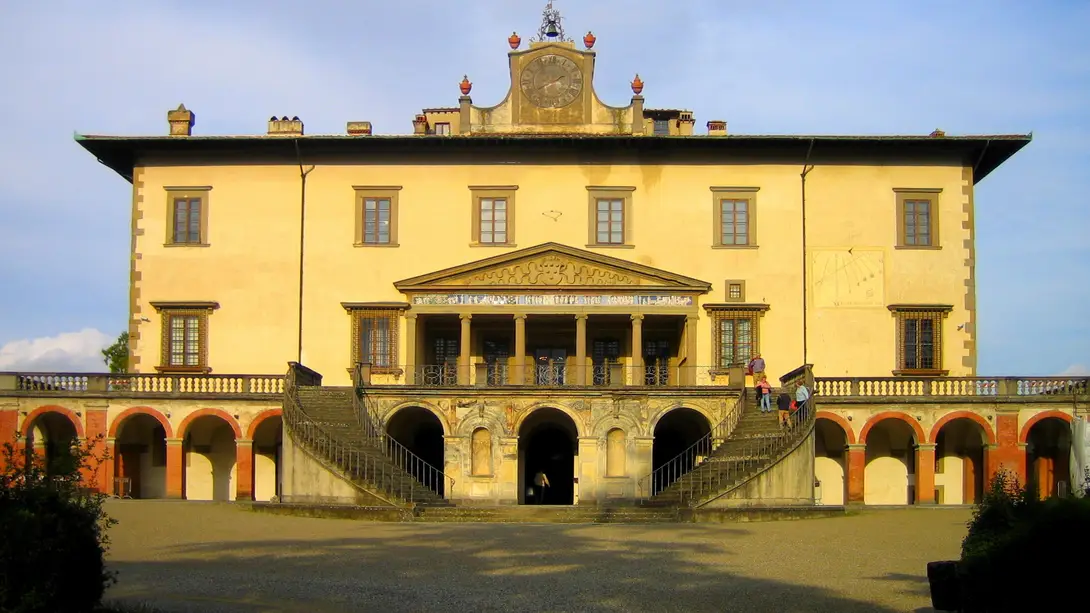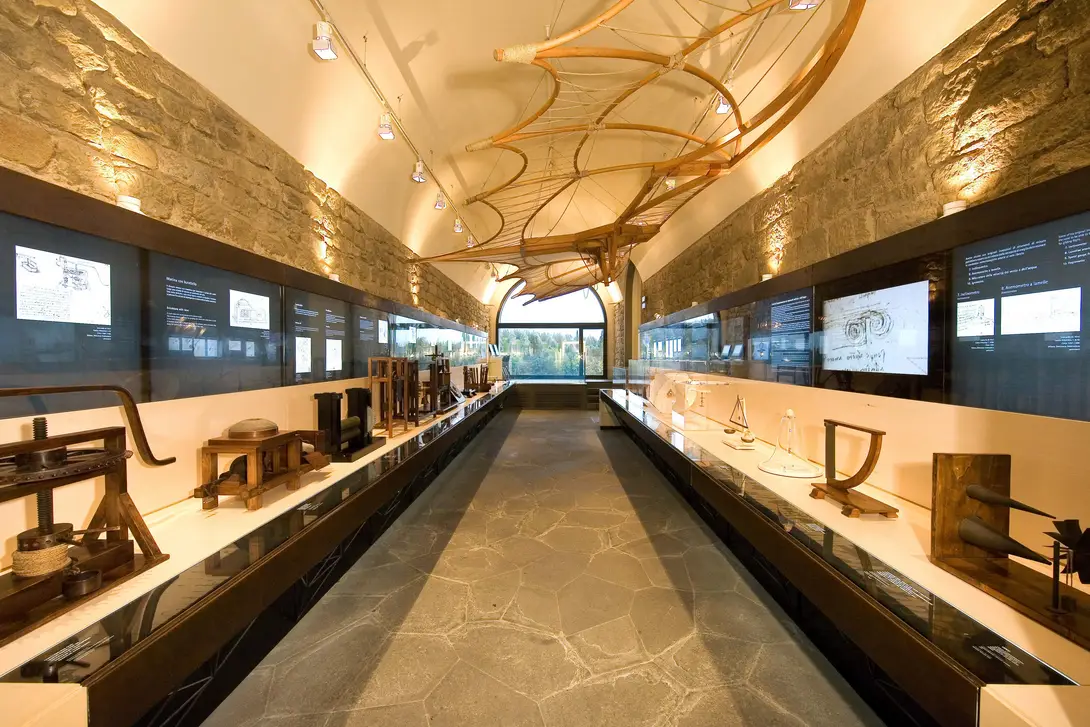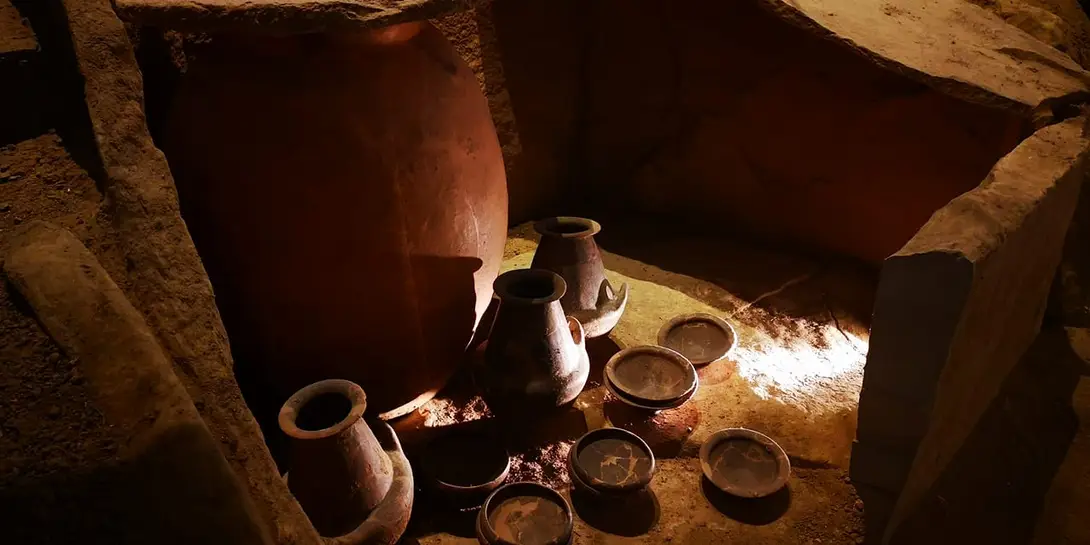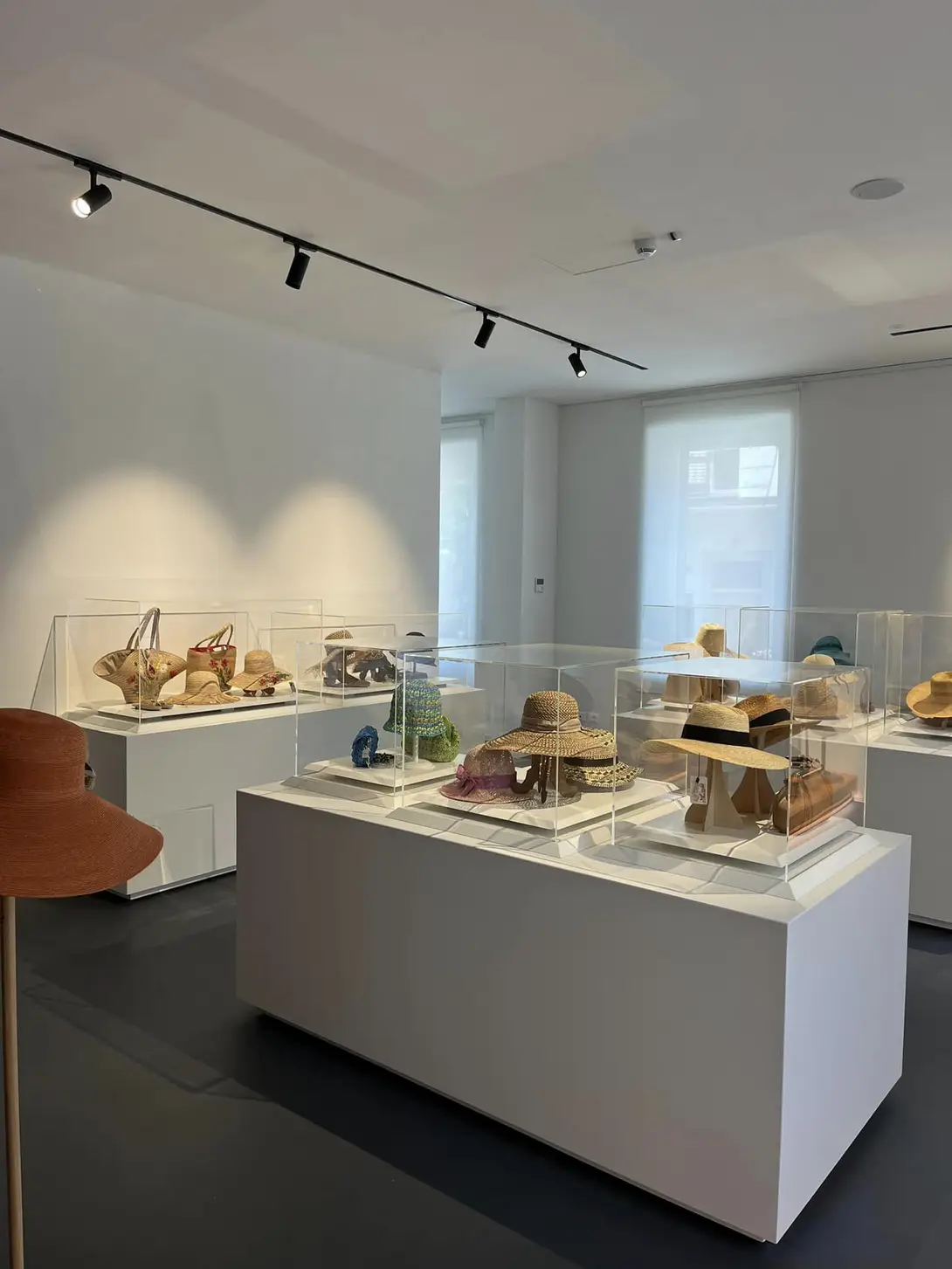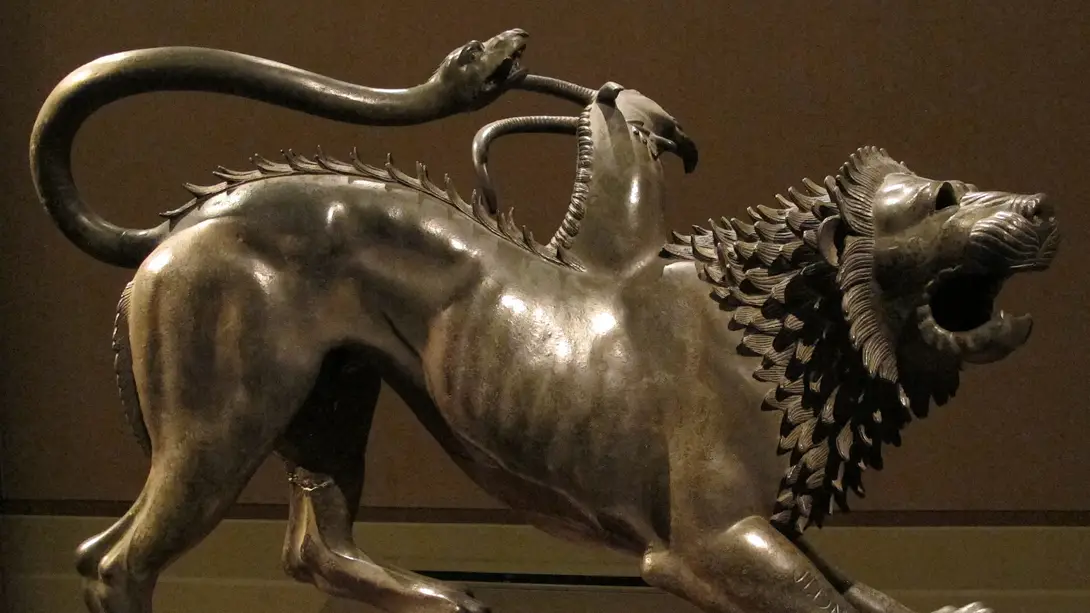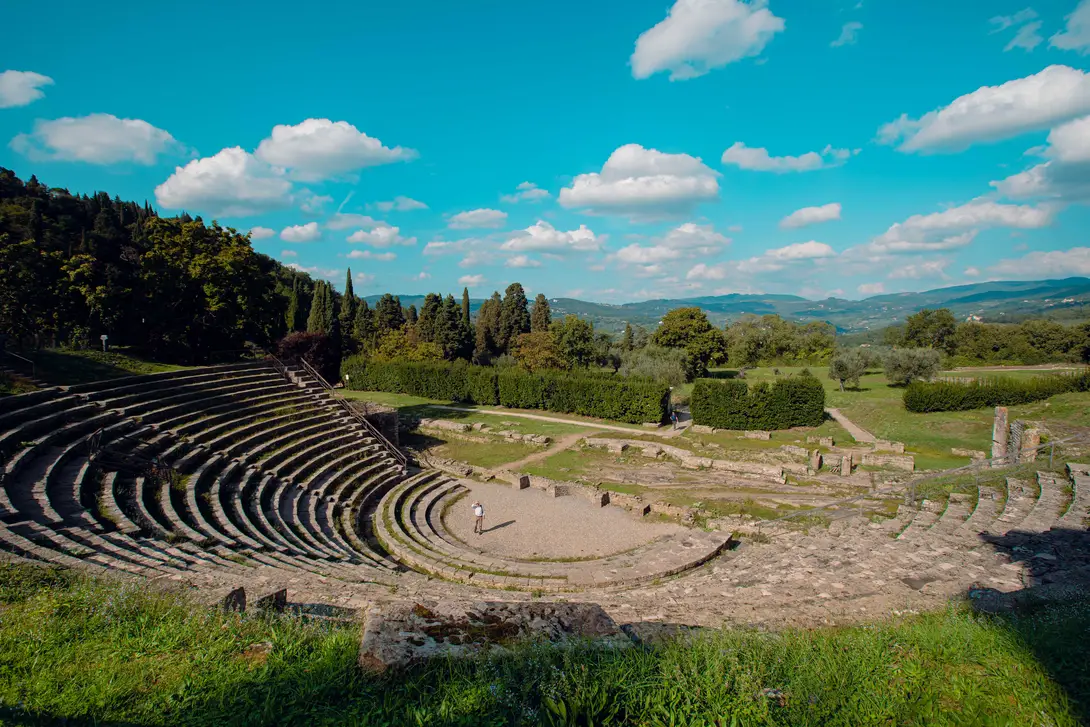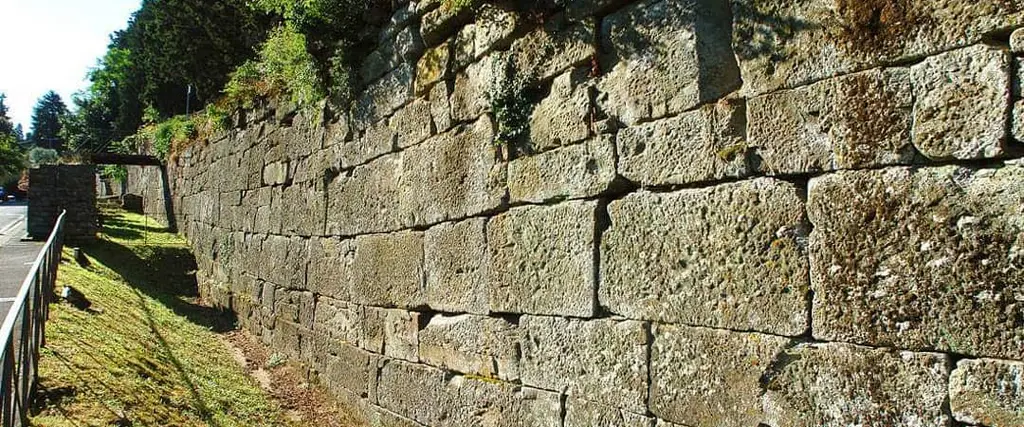
Toscana Terra Etrusca - metropolitan trail
The metropolitan trail of the project Toscana Terra Etrusca, in total about 90 km, begins from the connection with the Via Francigena near Fucecchio and then reaches Fiesole, passing through the municipalities of Cerreto Guidi, Vinci, Capraia e Limite, Carmignano (Prato), Signa, Campi Bisenzio, Florence and finally Fiesole, following the route of the ancient Etruscan way that connected Volterra with Fiesole.
The route starts in Fucecchio, exactly at the junction with the Via Francigena on Via di Ponzano, continues through the municipal area of Cerreto Guidi, up to Vinci. Starting from Vinci is the ridge route that, continuing then in the wood, leads to Mignana, from where, following another trail, you can reach the archaeological site of Pietramarina, that used to be located in the middle of the three big Etruscan settlements of Artimino, Fiesole and Volterra. The route continues then towards Vitolini and arrives, along the Via Carmignanese, to Calappiano.
Continuing towards Mignana, you proceed to the Etruscan settlement of Montereggi, that overlooked the basin of the Arno river and from there to the nearby Tomba dell'Uovo (Tomb of the Egg), so called becase of the huge egg-shaped monolith that dominated it. The route, after crossing the municipalities of Capraia e Limite and Carmignano, leads us towards the Archaeological Museum of Artimino, that houses precious relics from the nearby necropolises, and then heads towards Signa from the bridge that crosses the Ombrone river after Comeana. This last location preserves the Etruscan tombs of Boschetti and Montefortini; in Signa, instead, the planned stop is at the Antiquarium (inside the local Museo della Paglia straw museum), that houses the archaeological remains of the area.
From Signa you can cross the territory of Campi Bisenzio, in order to reach the remains of the Etruscan city of Gonfienti, overlooking the banks of the Bisenzio river, born on a Bronze Age settlement and later also used in Roman times.
Through the Parco dei Renai park you reach the cycle path along the right bank of the Arno river up to the Parco delle Cascine park and then, by now in the middle of the city, you arrive to the historic centre of Florence, where you can stop by the National Archaeological Museum, with its very rich collection of Etrurian treasures, first of all the very famous Chimera of Arezzo; later, crossing the area of Campo di Marte you can head towards Fiesole.
In Fiesole, besides the Archaeological Area, you can follow an itinerary of discovery of the traces of the past, and follow stretches of the mighty walls, that encircled the Etruscan city.
The project, that has been coordinated by the Metropolitan City of Florence, involved the placement of specific signage along the route, positioning some explicative showcases with the route map both in Fucecchio, at the start of the path, and in Florence (in the Niccolò Galli garden at Campo di Marte, before facing the climb leading up to Fiesole), and in Fiesole too, end point of the route.
Les lieux
Étapes
Fucecchio Municipal and Diocesan Museum
The Palazzo Corsini complex lies in the historic centre of Fucecchio and consists of thepark, the farmhouse and the main villa, where you find the museum,divided into threesections: archaeology, historyand art,andwildlife. Paintings include a Madonna and Saints byMasaccio’s brother, Giovanni di Ser Giovanni known as lo Scheggia. The archaeological section illustrates some aspects of the history of human settlements in the area from the Palaeolithic onwards, while the ornithology collection comprises almost 300 specimens and focuses mainly on wildlife in the Fucecchio Marshes.
Medici Villa of Poggio a Caiano
The villa, declared a UNESCO World Heritage Site in 2013, was designed by Giuliano da Sangallo for Lorenzo il Magnifico and is an example of Renaissance architecture that combines classical elements with those of rural Tuscan architecture. The lesson of Leon Battista Alberti is obvious, both in the choice of the villa's location and in the search for symmetry and harmony in its proportions. Cosimo I entrusted Tribolo and Davide Fortini with the construction of the garden.
Museo Leonardiano
Housed in the Palazzina Uzielli and the ancient castle of the counts Guidi, dating back to the 11th century. It is dedicated to Leonardo 's activities as a scientist, technologist and engineer. On display are models of machines based on Leonardo's codices, together with animations that show how they operate: from building site machines to flying and military ones, and science instruments too. One room is dedicated to optical studies.
Archaeological park of Montereggi
The Etruscan settlement of Montereggi can be dated to between the 6th century and 1st century BC but the archaeological finds prove that there were settlements since the 12th-11th century BC.
In addition to tombs, large wall structures have also been discovered.
Today the site is freely accessible.
The archaeological finds unearthed during the various excavations, mostly ceramic material, are today housed in the Ceramic Museum of Montelupo Fiorentino
Tomba dell'Uovo (Tomb of the Egg)
The tomb probably dates back to the 6th century BC and features an ample tambour of about 25 metres in diameter, with an entrance and a podium. On the top of the tomb is an imposing egg-shaped stone, naturally formed, on which Etruscan letters are engraved.
Discovered in 2002, the tomb is located not far from the Etruscan village of Montereggi.
Archaeological Museum of Artimino "Francesco Nicosia"
The museum tells the history of the Etruscan centre of Artimino and its territory, rich in Etruscan remains.
It houses the Orientalising grave goods hailing from the necropolises of Prato Rosello and Comeana and remains hailing from the Etruscan settlements of Artimino and Pietramarina.
The sections of the Museum are organised according to topographical and chronological criteria: the upper floor is dedicated to the population of the area with its various settlements and the evidence of daily life: the “World of the living”. On the lower floor you reach the most evocative dimension of the necropolises: the “World of the dead”.
Municipal Straw Museum
At the beginning of the 18th century, Domenico Michelacci started straw production on an industrial scale and until the 1950s Signa became the centre of the manufacture of hats made of this material (the famous 'straw hat of Florence').
The museum, which also hosts temporary exhibitions, brings together straw and woven objects made of different materials, work tools and machines, historical photos and works of art, and a selection of hats from the late 19th century to 1970.
The new museum building, inaugurated on 10 June 2023, has three levels - basement, ground floor and first floor - housing not only straw hats but also various types of straw braids, bags, paintings, equipment and machinery: seven exhibition rooms entirely dedicated to the preservation and enhancement of the history of Signese, which has its roots in straw processing.
The loggia of the main entrance opens onto a completely renovated courtyard with trees, flower boxes and stone benches. At the entrance is a large terracotta sculpture by Bruno Catarzi under a roof of hats hanging from the ceiling.
The first exhibition room on the ground floor, past the bookshop, is dedicated to audiovisuals: in fact, three ceiling-mounted video projectors have been installed for the continuous reproduction of films, photographs, and interviews on the history of the Museum to be watched while sitting on large poufs placed in the centre of the room. In addition to this, there are two rooms to the right for temporary exhibitions of various objects - certainly hats, but also bags and straw garments.
On the upper floor, three rooms are dedicated to the permanent exhibition: various machines are housed in these rooms - among them a 'needling machine', a tool with which, by means of a vertical movement of the needles, the fibre mattress is made compact. In addition there are paintings, candelabra, hats both in the showcases and hanging on the walls, mannequins for the display of clothing and glass vases containing various seeds to be used for educational experiences.
Finally, a 'selfie wall' for taking souvenir photos wearing straw hats provided by the Museum.
Archaeological Museum of Florence
The National Archaeological Museum, one of the most important, of this kind in Italy. houses masterpieces of the Etruscan, Greek-Roman and Egyptian art. It's inside the 17th century Palazzo della Crocetta, to which the Medici and Lorraine collections of antiquities were transferred from the Uffizi at the end of the 19th century.
The main core of works relates to theEtruscan civilization, including the large bronze statues of the Chimera and the Arringatore (Orator), plus an impressive selection of funerary sculptures (sarcophagi and urns), Greek pots and Attic ceramics, the highlight of which is the large black-figure crater known as the François Vase, which is decorated with mythological subjects.
The museum hosts a relevant collection of Etruscan andRoman bronzes, jewellery and ancients coins, some of which are unique worldwide. The collection of theEgyptian Museum, second in Italy only to the one in Turin, was put together mainly as a result of a French-Tuscan expedition to Egypt in 1828. It comprises materials ranging from the prehistoric period through to the early Christian era: vases, sculptures, sarcophagi with mummies, papyruses, amulets and small bronzesfrom various ages.
In the garden outside there are a number of reconstructed archaeological monuments. The garden is closed to the public.
The museum and its collections are suitable for very young visitors. Workshops and activities for family and children are occasionally organized in the museum’s rooms.
______________________________________________________________
Attention, due to important renovation works, until the end of 2026 the entrance is from via della Colonna 38 (the ancient entrance), and not from Santissima Annunziata Square
Archaeological Museum and Archaeological area
The museum exhibits chart the ancient history of Fiesole and the surrounding area: human presence in the zone dates back at least as far as the Bronze Age (around 2000 BC), while the cityitself began to develop at the end of the 4th century BC. Fiesole was an important Etruscan settlement, occupying a strategic position controlling routes between southern Etruria and the Etruscan settlements in the Po area, and a bulwark against invasions from northern peoples, in particular the Gauls. It became a Roman colony in 80 BC, though it retained its Etruscan characteristics: in fact, the Romans chose to settle in the valley, founding Florence.
The museum is connected to the Archaeological Zone, comprising the excavations of a theatre, baths and an Etruscan-Roman temple. The museum also houses the Costantini Collection, consisting of ancient Greek vasesand a reconstructedLombard tomb. Also of note are various Etruscan bronzes, black- and red-figure Greek and Etruscan ceramics, and marble friezes from the Roman theatre.

